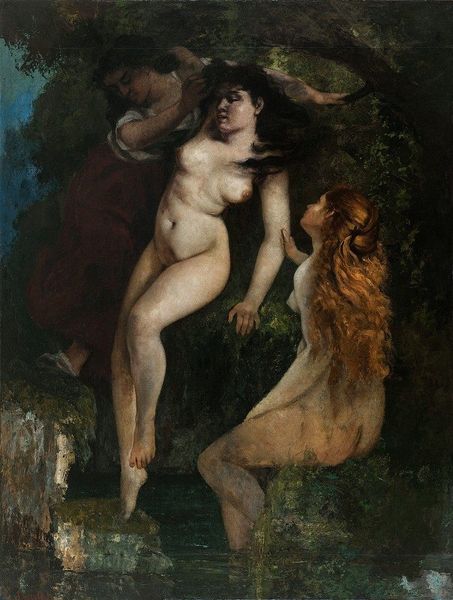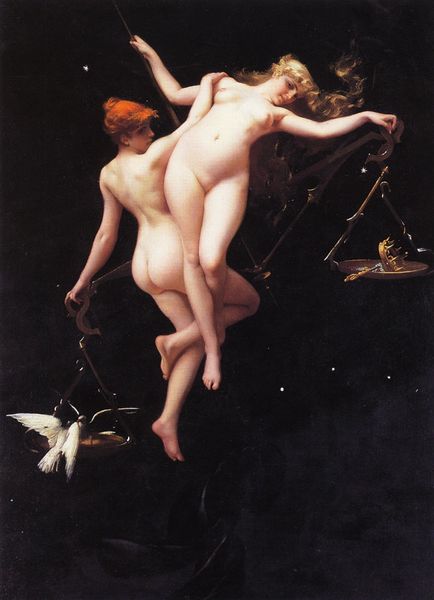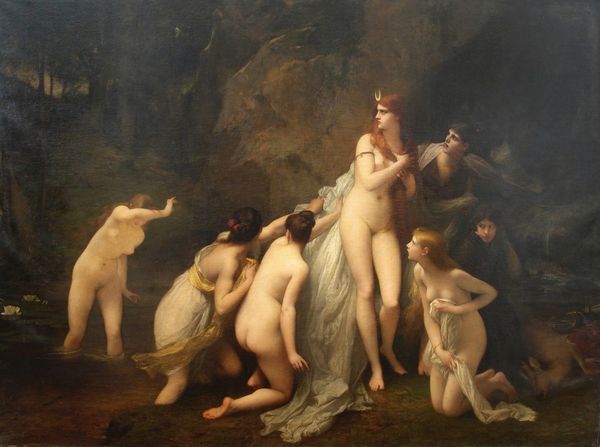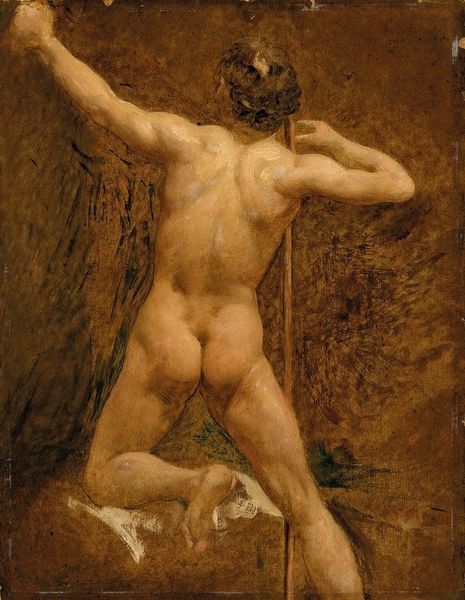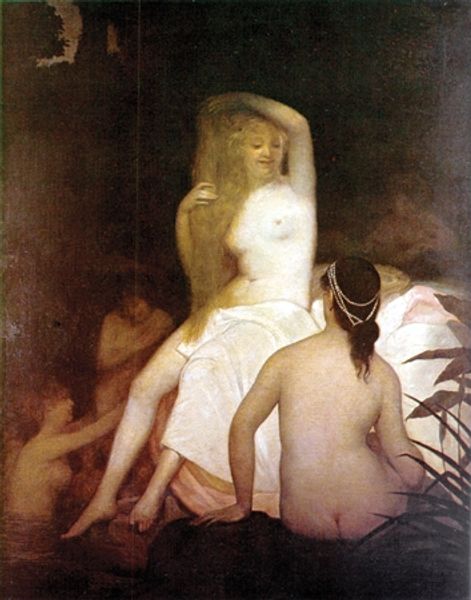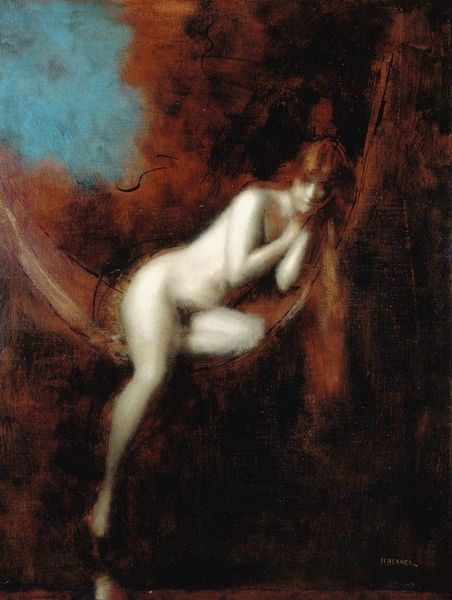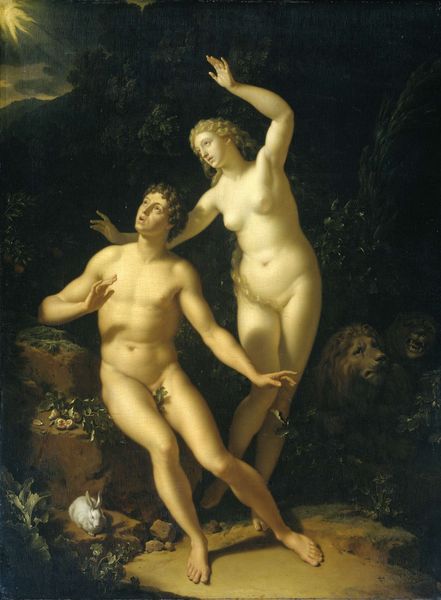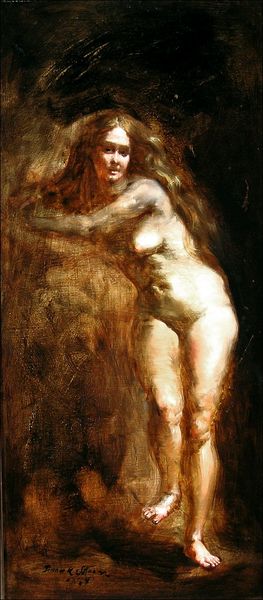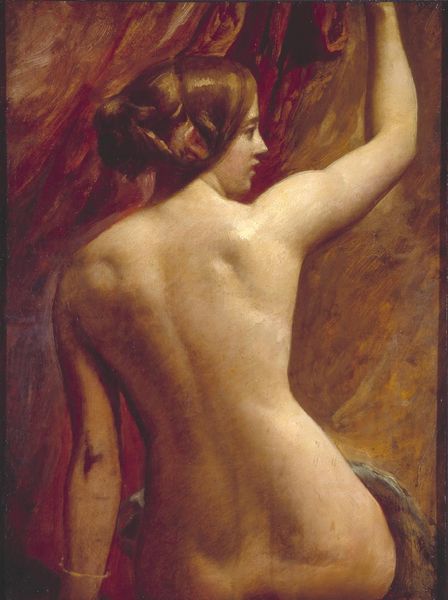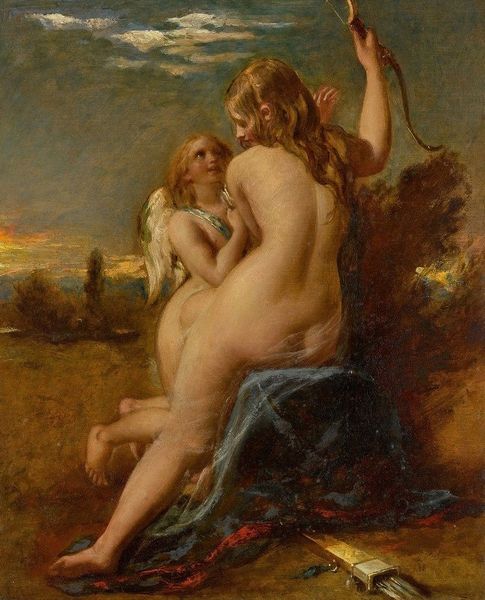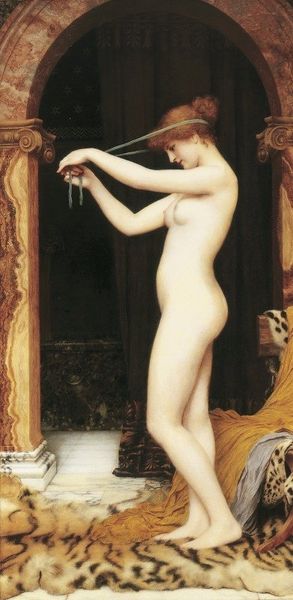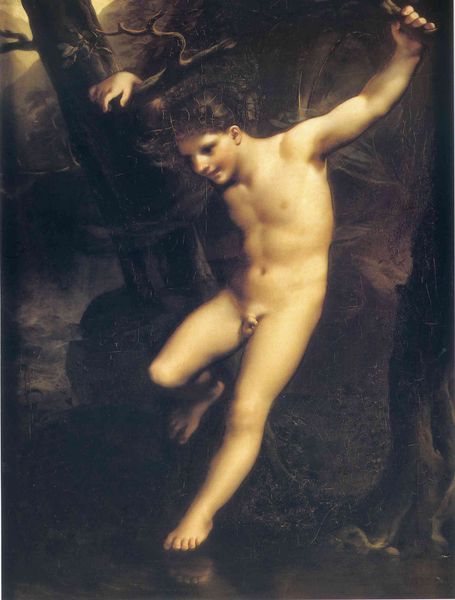
Copyright: Public domain
Curator: Well, Editor, what's your initial reaction to this oil painting, titled "Idyll" by Léon Bonnat, from 1890? Editor: There’s an immediate sense of...dreaminess, I suppose. A soft-focus kind of intimacy. They are intertwined but there's a shadow in the upper half that seems to cast an oppressive energy upon them. Who are these figures anyway? Curator: It appears to be an allegorical depiction, perhaps an idealized version of an early mythological scene. Look at the dark and light tones, one could see Adam and Eve after expulsion but before true acknowledgement of guilt or loss. They seem suspended between worlds, the real and divine. Note the strategically placed ivy—it functions both to conceal and to signify, no? Editor: Absolutely. The ivy, in particular, becomes a key element. In Western art, ivy is historically symbolic of attachment, even eternal love or memory, it hides and connects both lovers together with this idea. This resonates given the piece’s themes of intimacy, nature and also the Fall of Man, the biblical and artistic subject matter of loss from The Garden. There’s a definite visual dialogue there. But let's talk about craft: Bonnat clearly embraced academic painting, yet it feels different, the muted color palette of oils—earths and whites and barely discernible dark blues—it’s not nearly as grandiose as the style often tends to. Curator: I agree. And this subtlety highlights the artist’s labor and the socio-economic forces at play during the Third Republic. While nodding to traditional artistic hierarchies, Bonnat still centers a human interaction and form with a focus on skill. See how the texture of skin is painted? He allows material to take center stage rather than any religious or political symbolism. This moves away from traditional artistic subject matter and into process of making, the physical process behind artistic production. Editor: The interplay of shadow and light really draws my attention. Light usually signifies divine providence but here, there are patches of pure black and an ethereal glow as the woman in the painting reaches for this potential glow...is she reaching for divinity? It lends the whole scene a symbolic, psychological depth. The composition and their stance really do tell a powerful story, in a delicate way. Curator: Yes. I find the scale fascinating. Bonnat avoids large, imposing scale for a humanizing element, a move perhaps away from prior forms of art creation. By the scale and medium, oil on painting, Bonnat finds a perfect space for innovation between previous creative orthodoxies and his own material focus. Editor: That's insightful. Well, I've certainly seen the figures in "Idyll" in a new light—or shadow—thanks to considering its context and composition. I'll think about those earthy, almost corporeal, paints more closely now, with my understanding of symbolic history. Curator: And I’ve appreciated your exploration into the hidden stories embedded within the symbols Bonnat chose, making it all a testament to their shared past, creation and, perhaps, the burdens of love as well.
Comments
No comments
Be the first to comment and join the conversation on the ultimate creative platform.

